There's a super-surprising Supergirl in DC's Dark Knights of Steel #2
This twist on the DC Universe has got nothing on Games of Thrones
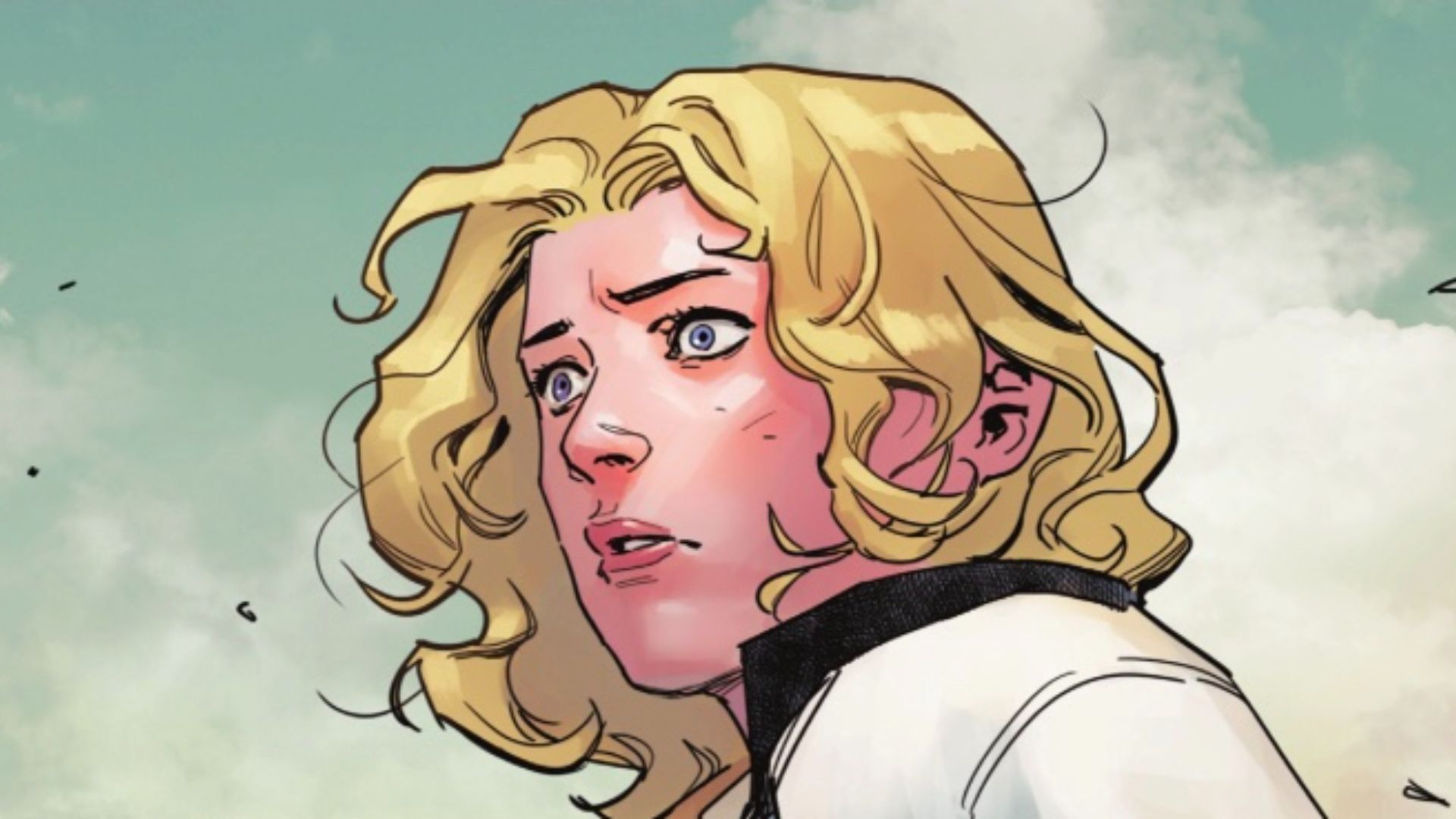
Writer Tom Taylor and Yasmine Putri's Dark Knights of Steel is a fun alternate world romp (what DC likes to call "Elseworlds") featuring one of today's most popular story devices - twists on iconic superheroes, characters, and plotlines. And in December 7's Dark Knights of Steel #2, Taylor and Putri serve up a fun twist on the Superman-Supergirl relationship, along with introducing a surprising romantic partner for that world's Wonder Woman.
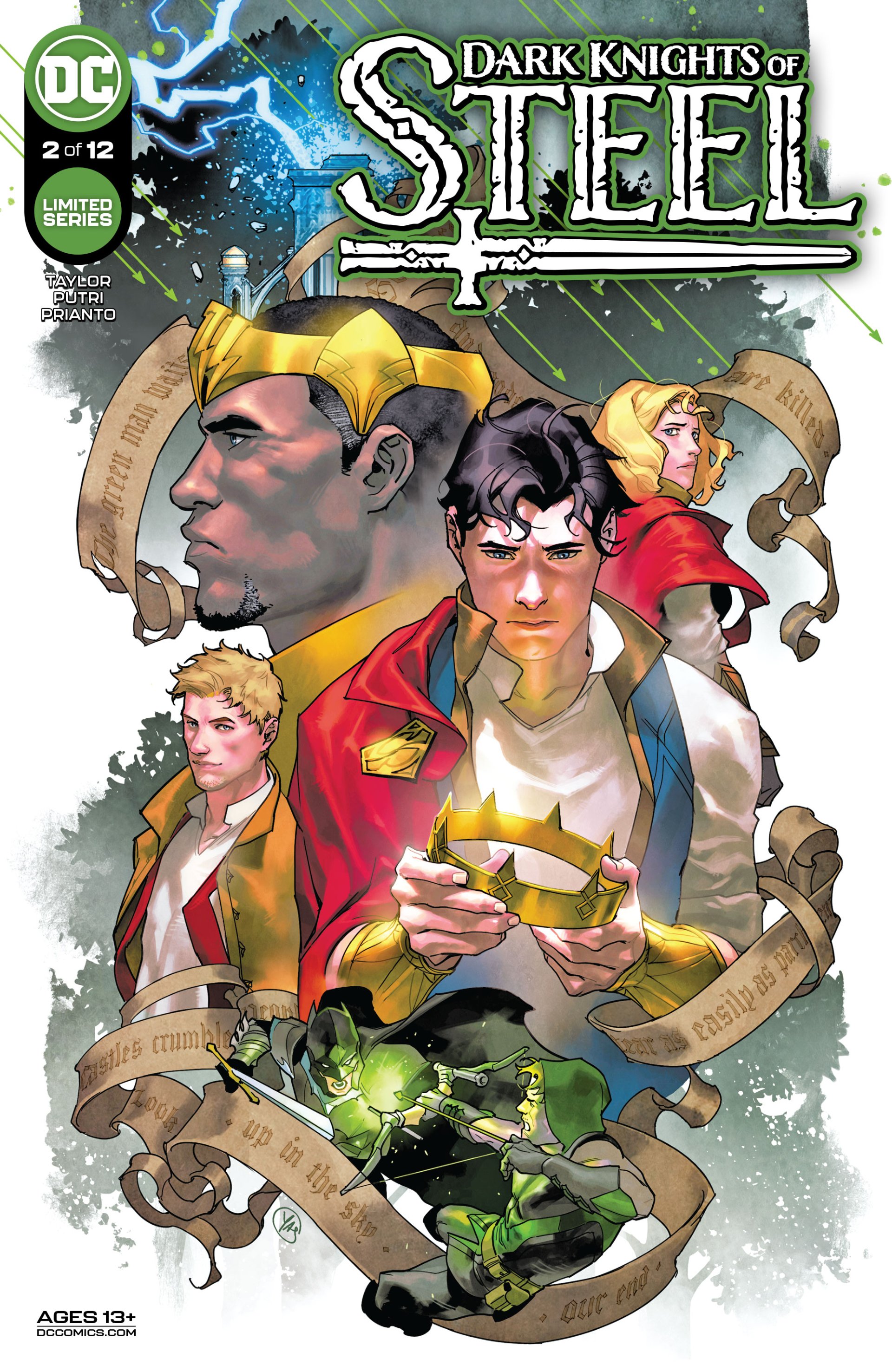
Spoilers ahead for Dark Knights of Steel #2
Dark Knights of Steel is set in a medieval-like/fantasy world in which numerous recognizable DC characters appear in familiar roles comparable to their contemporary status quos - but with the aforementioned medieval twists.
Black Lightning, Batman and all his Robins, Green Arrow, Green Lantern, Harley Quinn, and more all appear, with the biggest difference between the world of Dark Knights of Steel and the DC Universe most fans know is that Superman's parents Jor-El and Lara accompany baby Kal in a spaceship escaping the destruction of Krypton.
Landing on this medieval-like world, Jor-El and Lara wind up as monarchs of a kingdom at war with a rival nation led by Black Lightning.
Set immediately after the murder of Jor-El in issue #1 by an assassin who's referred to as the Green Man (the presumably but so far not-fully-revealed Green Lantern of this world) and Oliver (Green Arrow, of course), and Lois Lane is sent to Amazon Island to deliver the news of Jor-El's death.
There, readers meet the Dark Knights of Steel incarnation of Diana/Wonder Woman along with someone who looks a lot like the traditional DC Universe's Supergirl/Kara Zor-El - but who in this reality is surprisingly revealed as Princess Zala, Jor-El's daughter and Kal-El's sister.
Comic deals, prizes and latest news
Get the best comic news, insights, opinions, analysis and more!
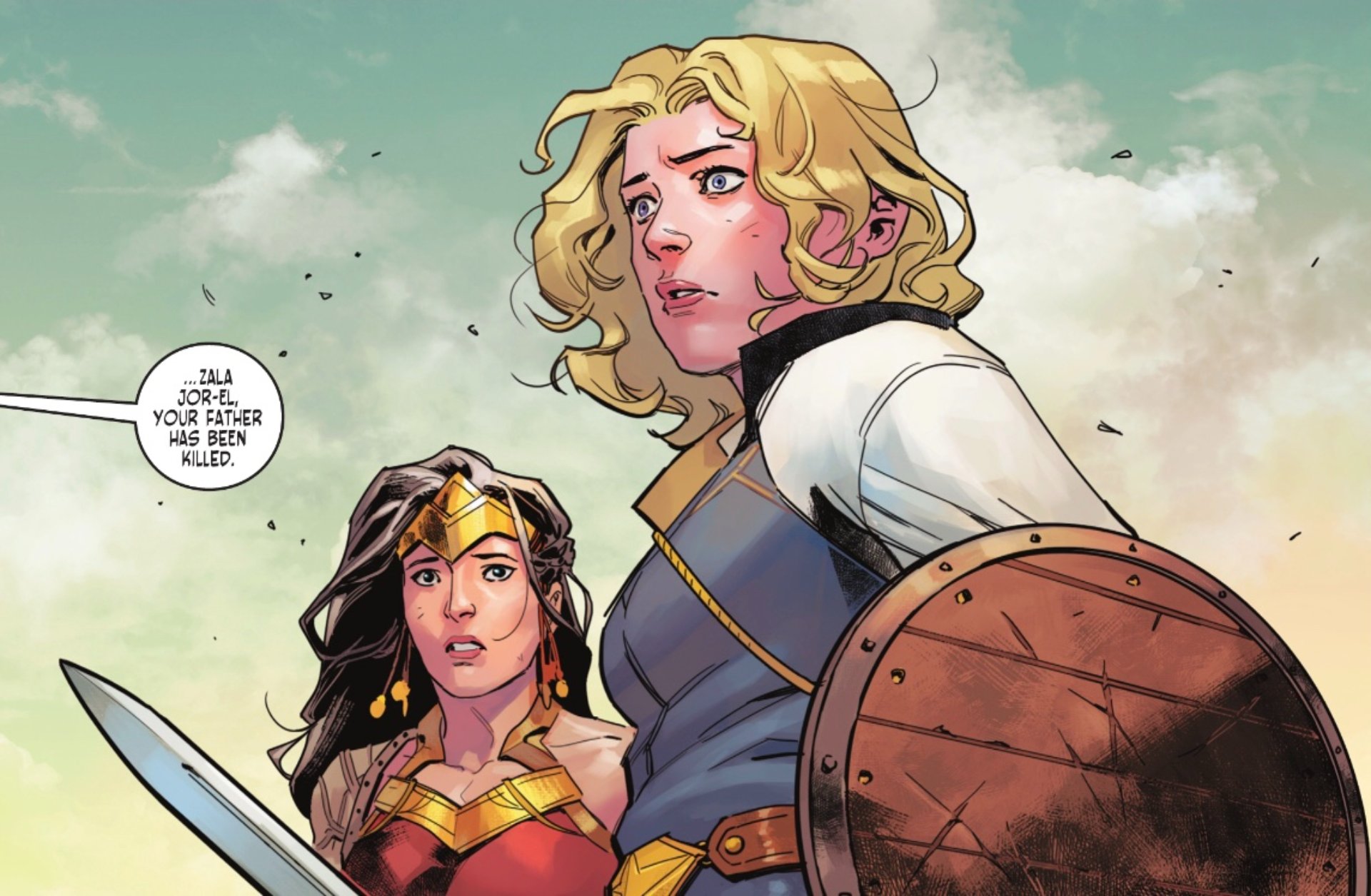
Which makes her Superman's second sibling to be introduced in the first two issues of this series - and the first brand new character to be introduced as a Kryptonian sibling for Kal-El, albeit in an alt-reality.
Zala, like her brother Kal, has yet to discover Bruce Wayne is secretly their half-brother (as revealed in the final pages of the first issue) in what's quickly becoming DC's very own super-Game of Thrones style epic.
The pair briefly grieve Jor-El's murder, and Diana offers Zala comfort, revealing Diana and Zala are lovers and partners before Zala flies off.
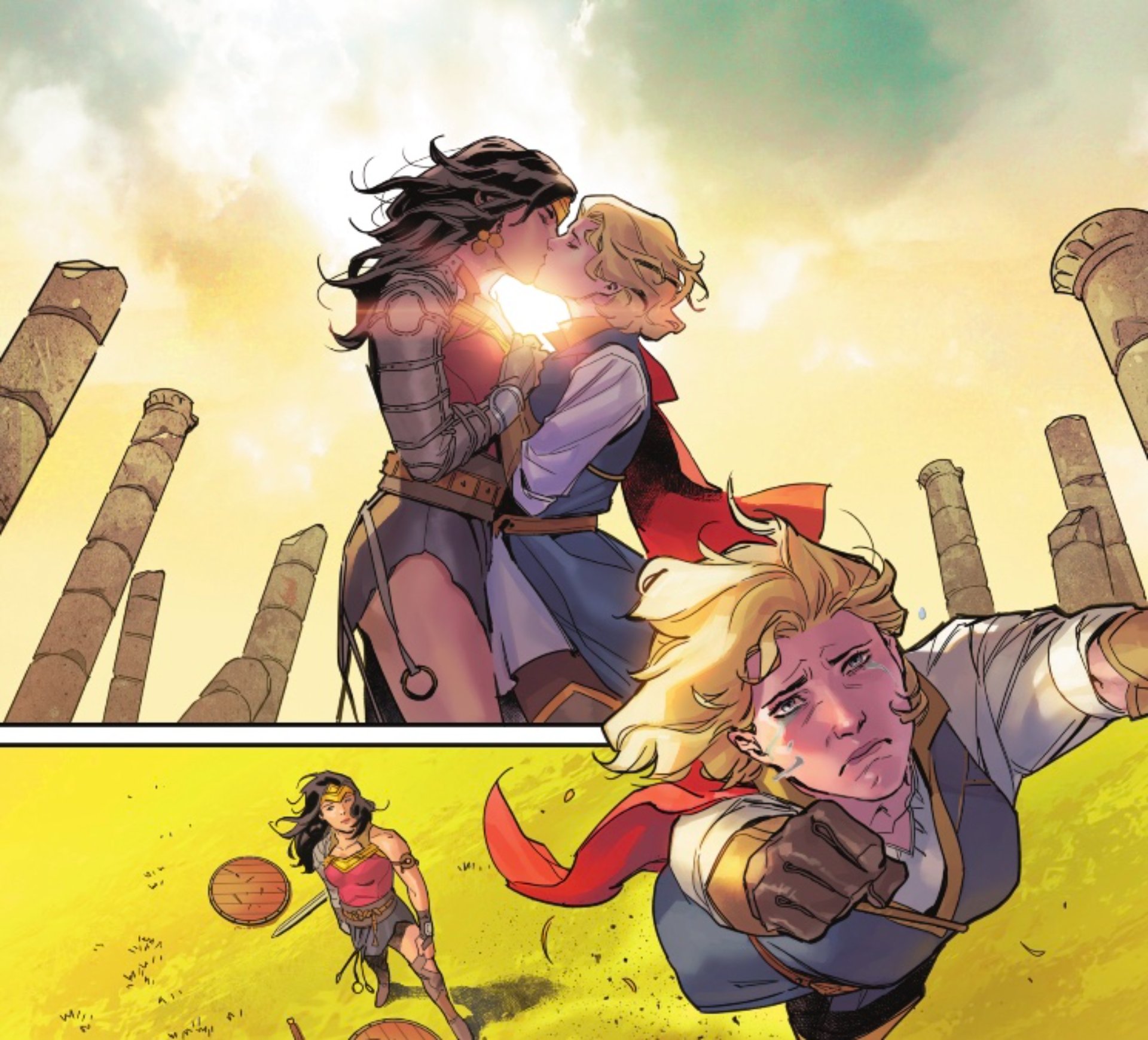
The moment adds a second upending of Earth-Prime continuity and its traditional relationships and a fun twist to what's been a decades-long flirtation between Superman and Wonder Woman over their history, which was fully consummated during the 'New 52' era when the publisher rebooted the Man of Steel's long-time relationship with Lois Lane and Clark and Diana officially but briefly became a couple.
And while it's not Kara per se, the moment could be seen as something of DC's answer to another version of Supergirl, the WB's live-action Kara Danvers, whose romantic relationship with Lena Luthor that was never fully embraced onscreen despite loyal fans clamoring for confirmation of their romance before the series ended last month - a media trope sometimes derisively called 'queer-baiting' in which characters are implied to be queer with stories and subjects that relate to queer fans, without ever confirming the character's sexuality or place in the queer community.
The comic book version of Kara/Supergirl herself is something gay icon. And though she's never been outwardly portrayed as queer, she's been perceived as 'queer-coded' before, meaning aspects of her story and personality are relatable to queer fans, despite there being no official confirmation of the character's sexuality.
In creator Mariko Tamaki and Joëlle Jones's 2016-2017's out-of-continuity Supergirl: Being Super limited series, Kara is not expressly codified as being queer, though writer Tamaki has related the emotions and experiences of her version of Supergirl to her own experience as a queer woman.
The Supergirl-Wonder Woman relationship and passionate kiss also further DC's ongoing embrace of the LGBTQIA+ community in more recent years, and especially in 2021. The publisher recently reunited the fan-favorite couple Harley Quinn and Poison Ivy, and introduced high-profile, attention-grabbing storylines in which Alan Scott/Green Lantern, Tim Drake/Red Robin, and Jon Kent/Superman all began journeys discovering and embracing their queerness.
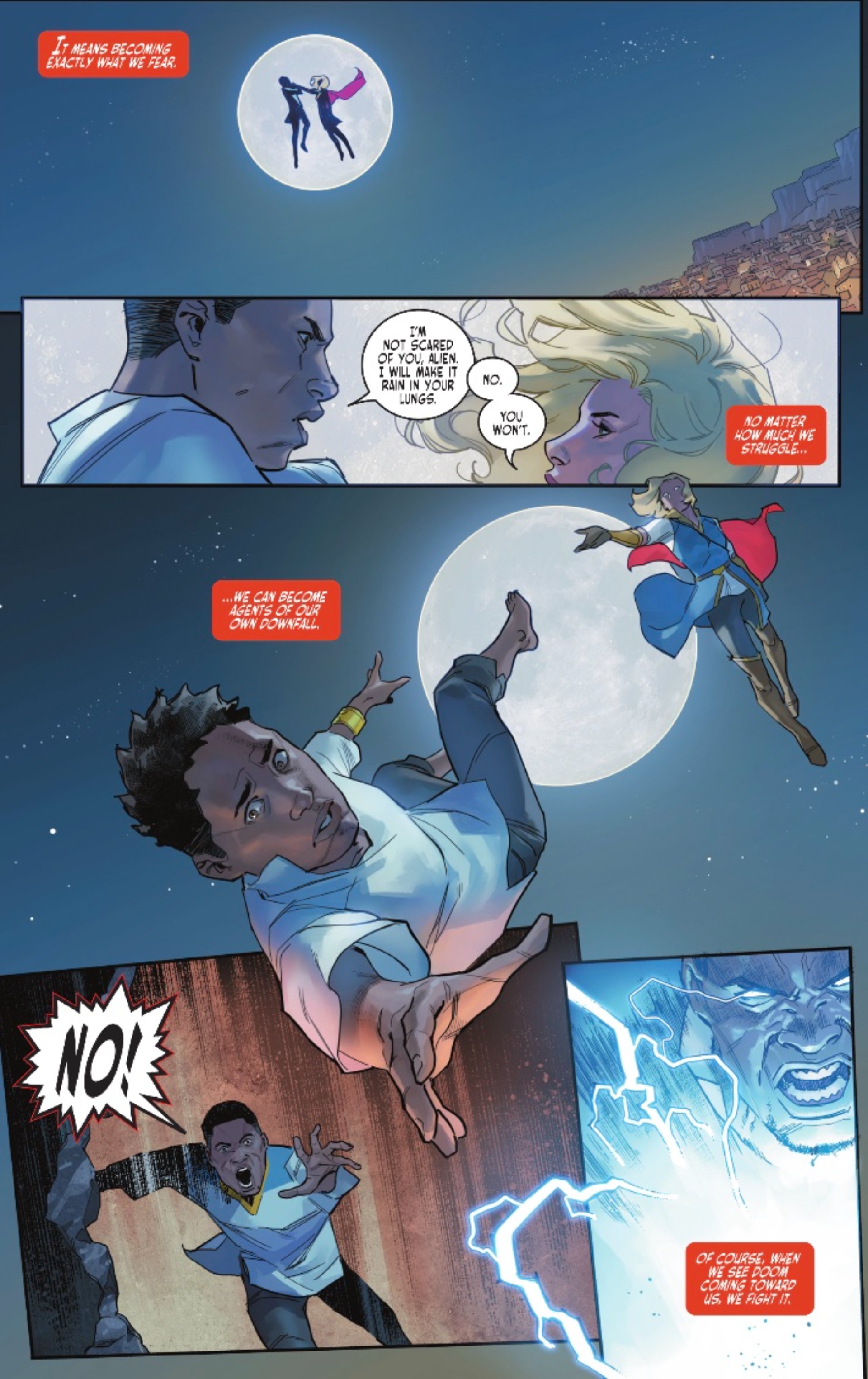
We'll see where Zala's relationships with Kal and Diana go in upcoming issues, but it may not be all idyllic sibling and romantic love as in the final pages of the issue, Zala straight-up murders Black Lightning's son in retaliation for the murder of her father. King Jefferson Pierce appears to have Jor-El killed based on his advisor Constantine's prophecy around the aliens-versus-magic-users feud between the Kingdoms.
Zala almost gleefully dropping Black Lightning's son out of the sky to his death will certainly escalate the war between the kingdoms and complicate her relationships.
But you'll have to wait until January's Dark Knights of Steel #3 to find out.
Despite the brevity of the relationship, the Wonder Woman-Superman pairing still makes them one of the most iconic superhero couples of all time.
I'm not just the Newsarama founder and editor-in-chief, I'm also a reader. And that reference is just a little bit older than the beginning of my Newsarama journey. I founded what would become the comic book news site in 1996, and except for a brief sojourn at Marvel Comics as its marketing and communications manager in 2003, I've been writing about new comic book titles, creative changes, and occasionally offering my perspective on important industry events and developments for the 25 years since. Despite many changes to Newsarama, my passion for the medium of comic books and the characters makes the last quarter-century (it's crazy to see that in writing) time spent doing what I love most.


